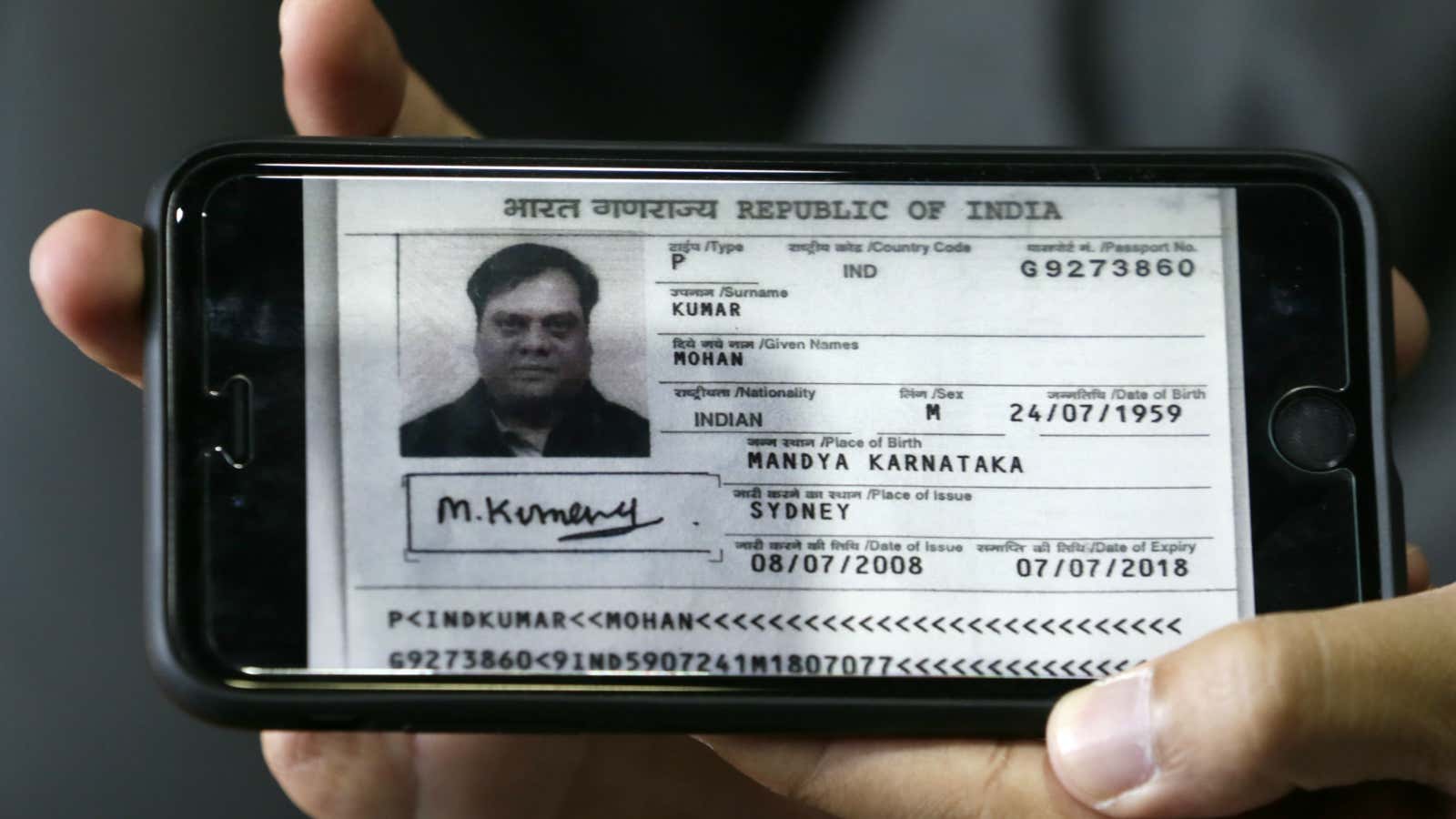On Oct. 25, Indonesian police arrested one of India’s most wanted criminals, Chhota Rajan, in Bali. The 55-year-old criminal has been on Interpol’s most wanted list for two decades for running a crime syndicate that dealt in murders, extortion and smuggling.
Journalist Baljeet Parmar has covered the Mumbai underworld for more than 40 years, during which he met Chhota Rajan more than 50 times. He was even shot at in 1997, allegedly by members of the Chota Rajan gang. In the column below, the veteran crime reporter recalls the rise and fall of one of India’s most notorious gangsters.
The rise and advent of present day underworld don Rajendra Sadashiv Nikalje alias Chhota Rajan began in late 1970s when the sprawling metropolis of Mumbai was notorious for petty street crimes.
It was a time when criminals ruled over their respective localities depending on their caste, religion and personal influence. There were almost a dozen criminal gangs operating in different parts of the city, indulging in illicit bootlegging, gambling, extortion, protection and prostitution rackets.
The smaller gangs with fancy names like Cobra, Diamond and Golden operated from the island city areas of Dadar, Parel, Lalbaug and Bhoiwada. Other gangs, like that of Khim Bahadur Thapa, Avadhoot and Bada Rajan, held sway in the eastern suburbs of Chembur, Ghatkopar, Vikhroli, Bhandup and Mulund. And Chhota Rajan was one of the hirelings of Bada Rajan.
Apart from running extortion and protection rackets, Bada Rajan also indulged in black marketing of cinema tickets in areas under his control. Chhota Rajan started his career at Ghatkopar’s Sahakar cinema and mastered the art of selling tickets in the black market, hoodwinking cinema owners and local cops. His job also gave him the opportunity to strike a working relationship with conniving cops who accepted bribes to look the other way.
Within a couple of years, Chhota Rajan rose through the ranks to become the second-in-command to his boss. As luck would have it, Bada Rajan was killed in a police encounter and Chhota took over the outfit, which later became known as the Chhota Rajan gang.
By 1985, the city was in the grips of an ugly gang war between Dawood Ibrahim and the Pathan gang led by Karim Lala. Chhota Rajan smelled an opportunity to strike it big by supplying hired killers to Dawood and his company. During the escalating gang war, Dawood took Chhota Rajan’s help in eliminating at least 10 members of the Pathan gang.
By 1988, when notorious gangster Ashok Joshi of the Arun Gawli gang was brutally murdered in the outskirts of Mumbai, Chhota Rajan had become a name to be reckoned with in Mumbai’s underworld.
Around the same time, in an effort to curb rising street crime, the Mumbai police started killing notorious criminals in encounters. Sensing trouble, Chhota Rajan fled to Dubai to join his new boss and master Dawood Ibrahim, who had already shifted his base to the Gulf Emirate two years earlier.
Once in Dubai, sitting in a small cabin of Dawood Ibrahim’s sprawling headquarters at Pearl Centre, Chhota Rajan transformed himself into an NRI don. During this period, he faced a stiff but subtle opposition from already well-established Dawood aides like Chhota Shakeel and Aftab Batki. Anees and Noora, the two Dawood siblings, also gave him a hard time. Dawood had a tough time in brokering peace between the two warring groups within his own empire.
Towards the end of 1988, the Pathan gang and Dawood came to a settlement. This development eroded Chhota Rajan’s clout within the D-Company, as the outfit came to be known, since Dawood no longer needed Chhota’s help in dealing with the Pathans.
As the lucrative business of contract killings came to a halt, the D-Company branched out into better-paying activities like smuggling and real estate. Chhota Rajan had almost no role to play in these fields and it alienated him further.
Then came a major turning point in the history of Mumbai underworld. In December 1992, the Babri Masjid was demolished resulting in large-scale Hindu-Muslim riots. The distrust between the two communities widened further after the March 1993 serial bomb blasts in Mumbai. Dawood was named as one of the main accused in the blasts.
Chhota Rajan parted company with Dawood citing religious reasons and took a flight to Bangkok. There, he started operating his own independent gang known as CR Company—a move which resulted in bitter enmity. Rajan went on a killing spree by targeting Dawood’s trusted people, blaming them for their involvement in the blasts. Dawood, on the other hand, put Chhota Shakeel on Rajan’s trail to eliminate him. Rajan escaped several attempts on his life but was finally shot at and injured in 2000 at Bangkok. Rajan went on changing his hideouts, always living in the shadow of death.
All these years, Rajan remained in close touch with the Indian intelligence agencies, providing them information and clues on the D-Company. The Indian agencies reciprocated by informing Rajan about imminent risks to his life.
The circumstances leading to Rajan’s so-called arrest in Bali, Indonesia are yet to be established. As he was always within the reach of the Indian agencies, which could have called and nabbed him any day, his arrest on the basis of an Indian red corner notice raises eyebrows.
There is much more to the entire episode than what meets the eye.
We welcome your comments at ideas.india@qz.com.
